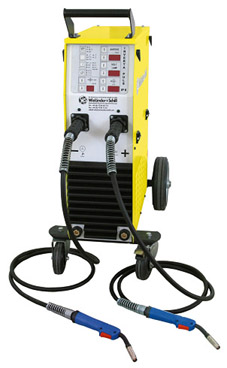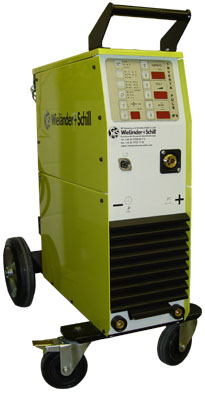|
Maybe there have been many times where you have been MIG welding on a car and you have needed to change wires to do either MIG Brazing or Aluminium. The time spent changing bottles and spools is wasted and probably very inconvenient too. The new InvertaPuls IP6/2 can be set to weld any combination of Steel, Brazing or Aluminium wire. Once the wire is fitted and the bottles turned on, the use of the welder is simple. By pressing
the trigger on one torch it recognises the job it has to work on.
The pre-set parameters means the Amps, Volts and wire speed are
automatically set and the rest is down to the operator. It is even
possible to store the individual programs for the different jobs.
This is invaluable for doing repeat work. General Information
MIG-MAG welding units MIG Metal
Inert Gas welding MAG Metal
Active Gas welding MIG Brazing MIG welding wire melts at about 1500°C, which is too hot for the new AHSS steels. Overheating changes the molecular structure of the steel, making it brittle and susceptible to rusting. MIG Brazing wire on the other hand melts at around 900°C and flows between the gap, leaving a repair that is formable and yet stills retains the correct tensile strength. When the repair is completed, the brazing wire should have flowed between the gap and there should be no burning or powdering of the protective coating on either surface. What choice? Because the power setting between each of the stepped adjustments is fixed, it is unlikely that the correct amps or volts will be selected to give suitable results. In essence, the welding power would either be too strong and in which case it will burn the coating, or not strong enough and in this case the weld will be too weak. For
more information and to register for updates by email, please click
here.
|
InvertaPuls IP6-2  InvertaPuls IP6  |

